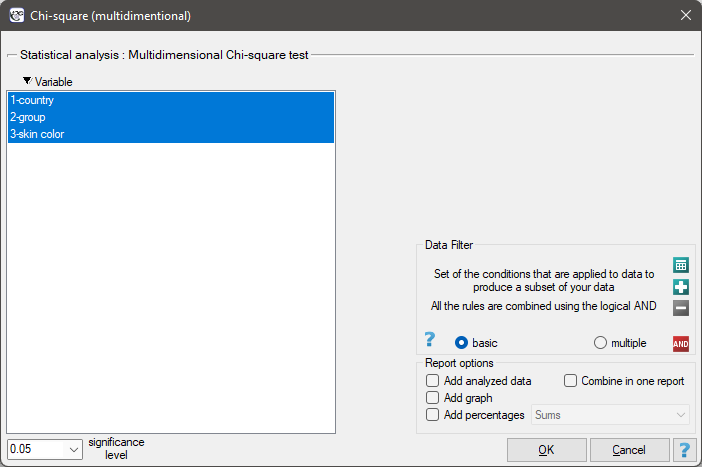Narzędzia użytkownika
Narzędzia witryny
Pasek boczny
en:statpqpl:porown3grpl:nparpl:anova_chipl
The Chi-square test for multidimensional contingency tables
Basic assumptions:
- measurement on a nominal scale - any order is not taken into account,
Hypotheses:

where:
 and
and 
 observed frequencies in a contingency table and the corresponding expected frequencies.
observed frequencies in a contingency table and the corresponding expected frequencies.
The test statistic is defined by:

This statistic asymptotically (for large expected frequencies) has the Chi-square distribution with a number of degrees of freedom calculated using the formula:  - for 3-dimensional tables.
- for 3-dimensional tables.
The p-value, designated on the basis of the test statistic, is compared with the significance level  :
:

The settings window with the Chi-square (multidimensional) test can be opened in Statistics menu → NonParametric tests (unordered categories)→Chi-square (multidimensional) or in ''Wizard''.

Note
This test can be calculated only on the basis of raw data.
1)
Cochran W.G. (1952), The chi-square goodness-of-fit test. Annals of Mathematical Statistics, 23, 315-345
en/statpqpl/porown3grpl/nparpl/anova_chipl.txt · ostatnio zmienione: 2022/02/13 17:25 przez admin
Narzędzia strony
Wszystkie treści w tym wiki, którym nie przyporządkowano licencji, podlegają licencji: CC Attribution-Noncommercial-Share Alike 4.0 International

